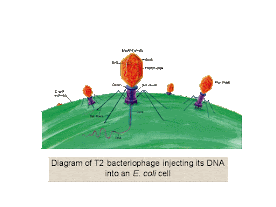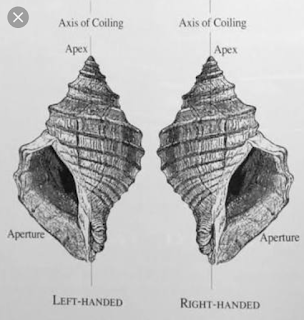DNA as genetic material
DNA is genetic material in all living beings except few plant viruses. But why? 🤔
Properties of genetic material
- It must be Chemically and structurally stable .
- It can produce it's replica.
- It should provide scope for mutation that is required for evolution.
- It should be able to express itself in the form of 'Mendelian characters. '
How DNA fulfill this criteria?
- Mendel believed that factor /genes contain the information which is required to express particular traits in successive generations.As DNA consist genes and passes the heredity characters from one generation to next generation. So it fulfill the Mendelians character criteria.
- Due to condition of producing replica, proteins fail to fulfill the criteria. Whereas DNA and RNA fulfills the criteria.
- Both DNA and RNA are able to mutate. Because of presence of 2'-OH group (present at every nucleotide in RNA) makes RNA labile and easily degrade. Due to this Unstability in structure RNA mutates at faster rate and that is the reason viruses have RNA as genetic material. They mutate easily and evolve fast.
- DNA and RNA are chemically and structurally stable. But DNA is more stable due to presence of Thymine (5-methyl Uracil) instead of Uracil .
Evidences for DNA as genetic material
Frederick Griffith, British medical officer (1928) was trying to find cure for pneumonia. So, he performed an experiment with bacterium Diplococcus pnemoniae. That was the first step to prove that DNA is genetic material. After 16 years of his experiment, three scientist Avery, MacLeod, McCarty identify transforming genetic material i.e. DNA.
The Griffith's experiment is known as Bacterial transformation.
Bacterial transformation
Bacterium, Diplococcus pnemoniae is found in two forms.
1.Smooth strain 2. Rough strain
- Smooth Strains (S) : whose cells produce capsules of polysaccharides, that cause the colonies of agar smooth and shiny. As it is virulent, it causes pneumonia. It is of several types like S- I S- II ,S- III etc .
- Rough Strain (R) : whose cells lack capsules and produce rough colonies, these are non virulent and does not cause pneumonia. It of of several types like R I ,R- II , III etc.
Experiment :
- Griffith first injected virulent S III into mice it causes pneumonia and mice died.
- Non virulent R II strain was injected into mice ,no pneumonia was caused and mice survived.
- Now heat killed S III strain was injected into mice but this time it does not cause pneumonia, and mice survived.
- At last mixture of R II strain (non-virulent) and S III strain (heat killed) was injected into mice and it causes pneumonia and mice died.
Identification of transforming genetic substance
In 1944, Avery,MacLeod,McCarty tested mixture of heat killed S III cells with R- II (living cells) .
When they mix capsule ,cell wall, cytoplasm (without DNA) of heat killed S III type cells with R II type cell, there was no pneumonia hence no transformation.
But when they mix DNA of heat killed S III pneumonia developed.
Observation
They observe that only DNA of heat killed S III cells transform R II(non virulent) into pathogenic.
They also observe that proteinase (protein digesting enzyme), RNAase (RNA digesting enzyme) doesn't affect the transformation.
By adding DNAase ,transformation doesn't occur. So it was clear that DNA is one which transform R- II into pathogenic. But it was not acceptable by many scientists.
After 8 years, A. Hershey and M. Chase gave an equivocal proof. They performed experiment with viruses Bacteriophage T2*.
Hershey and Chase Experiment
- T2 Bacteriophage : It contains genetic material (DNA) in inner core, covered by previous, non genetic shell.
Head :.Head is elongated, bipyramidal, six side structure made up of proteins.
DNA is enclosed in head region it contains phosphorous
Tail :.Tail is hollow, cylindrical, bears 24 helical striations, having a hexagonal plate at distal end from where six tail fibres origin. It is made up of proteins only. It contains sulphur.
Preparation of phage particles
These particles was prepared by using radioisotopes 35S and 32P.
- Some Bacteriophage was grown in medium containing 35S radioactive with cysteine and methionine. Thus this mixture forms the proteins of phage
- Other Bacteriophage was grown in 32 P culture.Thus formed the radioactive DNA.
Now the two radioactive phage preparation are ready to infect the culture of E. coli.
Observation :It was observed that DNA produce radioactive pellets with 32P in DNA,whereas proteins were failed to migrate into bacterial cell as nil radioactivity was observed in bacterial pellets.
Conclusion :During infection by Bacteriophage T2, it was DNA which entered the bacteria.During eclipse period, DNA replicates numerous times within the cell. Towards the end of eclipse period phage
DNA directs the production of protein coats.
*Bacteriophage :bacteria infecting virus .










Click on 'view web version ' to like and follow.
ReplyDelete" AMAZING WRITE-UP , NICE INFO"
ReplyDelete